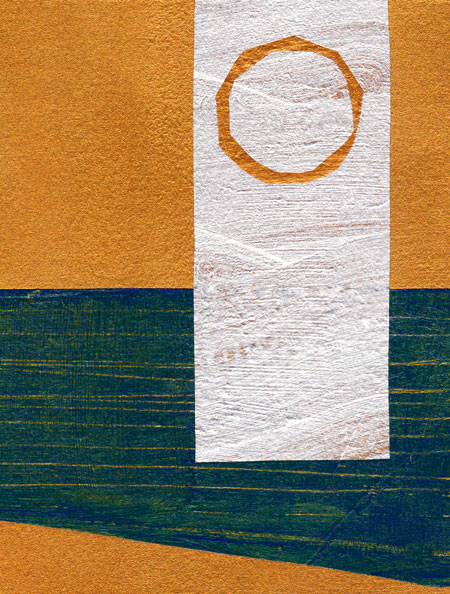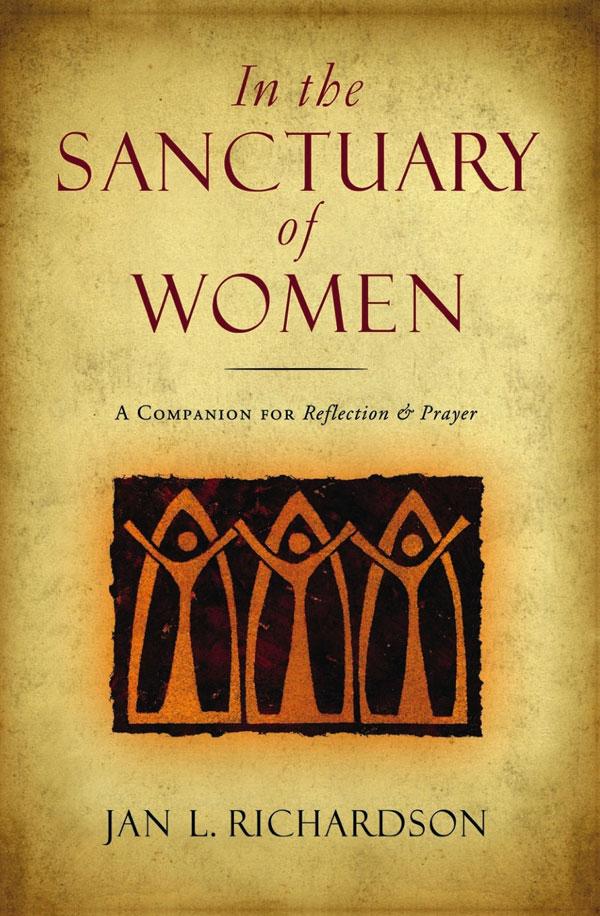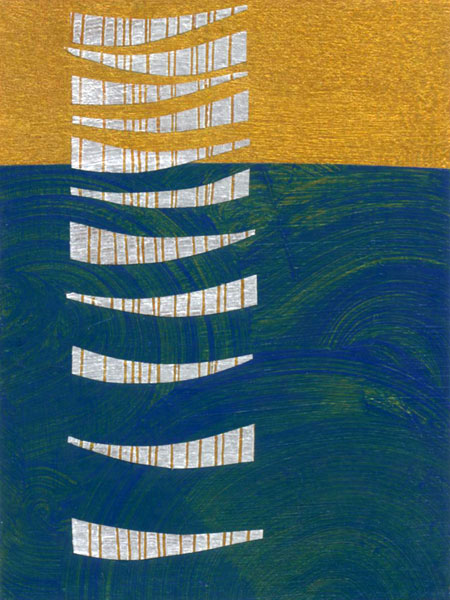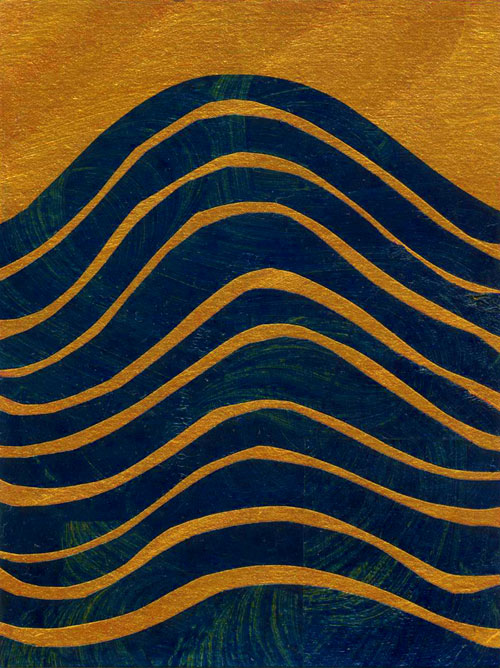
Following the Flow © Jan L. Richardson
Reading from the Gospels, Baptism of Christ/Epiphany 1, Year A: Matthew 3.13-17
From Genesis to Revelation, water arcs through the Bible, courses through the scriptures, shapes the landscape of the sacred text, surfaces again and again in the story of the people of God. Nearly always it is a sign of God’s provision, God’s providence, God’s care for those whom God has claimed. By the time we see Jesus meeting John at the Jordan in this Sunday’s gospel lection, we have already been swimming in the stories: of God giving a stream to Eden, of Hagar receiving wellsprings in her desperate wilderness, of Moses striking the rock that gave water to a thirsty and wandering people. We have read the tale of Jacob meeting Rachel by a well, the psalmist’s words about still waters that comfort and restore, and the prophet’s proclamation of the God who “will pour water on the thirsty land, and streams on the dry ground.” Again and again, God’s provision breaks through and springs forth in the form of water.
And here, the first time Jesus takes the stage as an adult, we see him come to the Jordan. This is the river in which, generations before, priests bearing the ark of the covenant had stood, stopping the waters so that the entire, long-journeying children of Israel could pass through to the other side. This is the river that Elijah struck with his mantle so that he and Elisha could cross, moments before Elijah’s dramatic ascension amid the blazing horses and chariots of fire. It is Jordan that Elisha tells the leprous Naaman to wash himself in and be cleansed, Jordan that King David crosses with all of Israel as he prepares to fight the Arameans, Jordan that traces a path through Israel’s history. It is a mythic river that Jesus wades into, and we watch him become drenched in its very real waters as he receives John’s baptism.
As Jesus rises from this ancient river, he is the recipient of all the graces that water signifies, imbued with the layers of symbolism and story and blessing that these waters convey. Yet he is not only recipient of this; as the waters of baptism roll off him, Jesus is also sign: this drenched and dripping Messiah embodies and shows forth in fullness just how far God will go to provide for and restore God’s people.
Here at Jordan, I find my eye drawn to the yielding that takes place in this river. When Jesus first approaches him, John challenges this baptism-seeking savior: “I need to be baptized by you, and do you come to me?” he says to his cousin. “Let it be so now,” Jesus urges him, his words an echo of the “Let it be” that his mother offered to the angel long ago, on the day that the same Spirit descended upon her. And just like that, the locust-and-honey-eating Baptist of the wilderness, who only a few verses earlier was railing at the Pharisees and Sadduccees and speaking of vipers and axes, winnowing forks and fire, falls silent. Gives in. Yields to Jesus like a stone yielding to the river that washes over it.
Jesus, too, does his own yielding. He places himself in John’s hands, leans into the liminal space of the ritual, gives himself up to the river and what it offers, gives in to the path that lies ahead of him. It is not a passive action that Jesus undertakes here. This is not the gesture of a man resigned to his fate; he is not letting his circumstances wash over him. Christ does not take part in—or call us to—blind acceptance. The yielding that Jesus engages in—and John, too—requires a different kind of strength, a different set of muscles than those involved in straining and striving and struggling to move forward. This yielding calls forth a courage born of recognizing the path to which we are called, and ceasing to fight against it: to give ourselves to its flow, to let it work on us, as the river does with the stone.
As we move into this new year and this new liturgical season, what muscles are you using? In the midst of working and reaching and pushing, is there a place where God might be inviting you to yield, to give in, to give yourself up, so that the grace of God may wash over you? Is there a ritual, a sacramental act, a liminal space that you need to lean into? Who could you ask to meet you there; who could help you say, “Let it be”?
As we approach this Sunday’s celebration of the Baptism of Jesus, I invite you to spiral back around some earlier art and reflections for this day. Click on the image or the title below to find your way to them.
In these days, may you know when to push, and when to give in, and may the grace and the power of God drench you and bear you along. Blessings.
Epiphany 1: Baptized and Beloved
Epiphany 1: Take Me to the River
Epiphany 1: Ceremony (with a Side of Cake)
[To use the “Following the Flow” image, please visit this page at janrichardsonimages.com. Your use of janrichardsonimages.com helps make the ministry of The Painted Prayerbook possible. Thank you!]
Bonus round: As you ponder these things, click the player below to hear “Hymn of the Stone” by my husband, Garrison Doles, from his CD One Man.
 P.S. NEW YEAR, NEW BOOK! As we move into this year, my new book, In the Sanctuary of Women, provides good companions for your path. In the spirit of Sacred Journeys, this book draws from the often hidden wellsprings of women’s wisdom in Jewish and Christian traditions, inviting us to engage the mysteries that lie at the heart of who we are. Not only for personal reflection, In the Sanctuary of Women also offers a space to engage with others, whether in an organized setting such as a book group or prayer circle, or with a friend across the country or across the table.
P.S. NEW YEAR, NEW BOOK! As we move into this year, my new book, In the Sanctuary of Women, provides good companions for your path. In the spirit of Sacred Journeys, this book draws from the often hidden wellsprings of women’s wisdom in Jewish and Christian traditions, inviting us to engage the mysteries that lie at the heart of who we are. Not only for personal reflection, In the Sanctuary of Women also offers a space to engage with others, whether in an organized setting such as a book group or prayer circle, or with a friend across the country or across the table.
The companion website, sanctuaryofwomen.com, offers info on where to purchase the book, and inscribed copies are available by request. More than being just about the book, the site is designed to foster conversation and community through features including a guide for reading groups and an interactive blog. I would love for you to stop by and to join with others in the conversations that are happening about how we can create sanctuary for and with one another in the coming year.















Leave a Reply